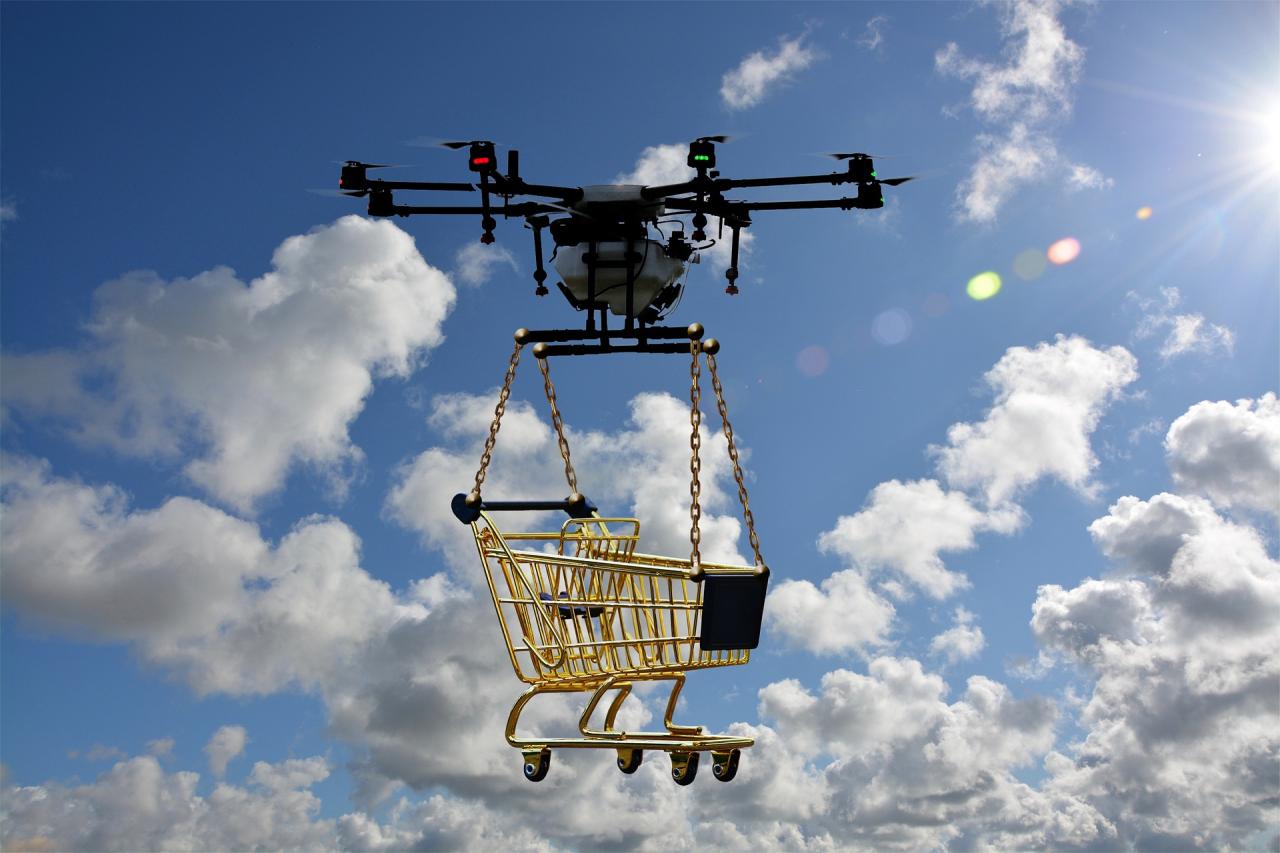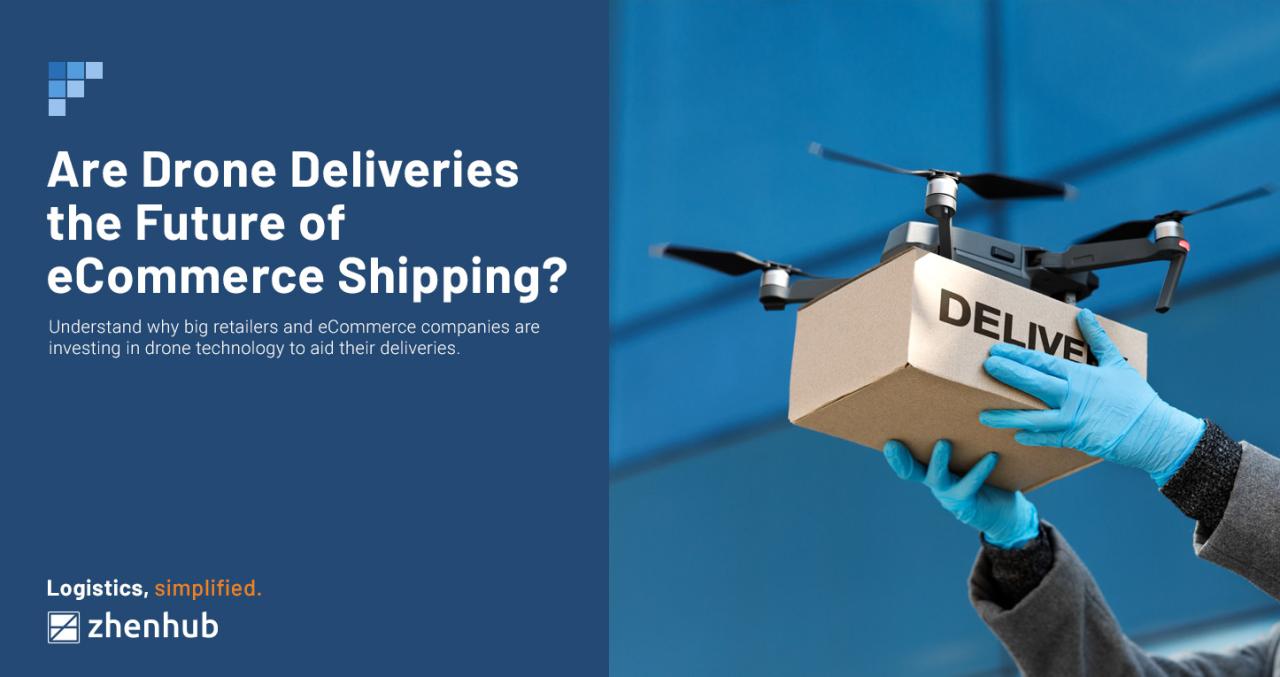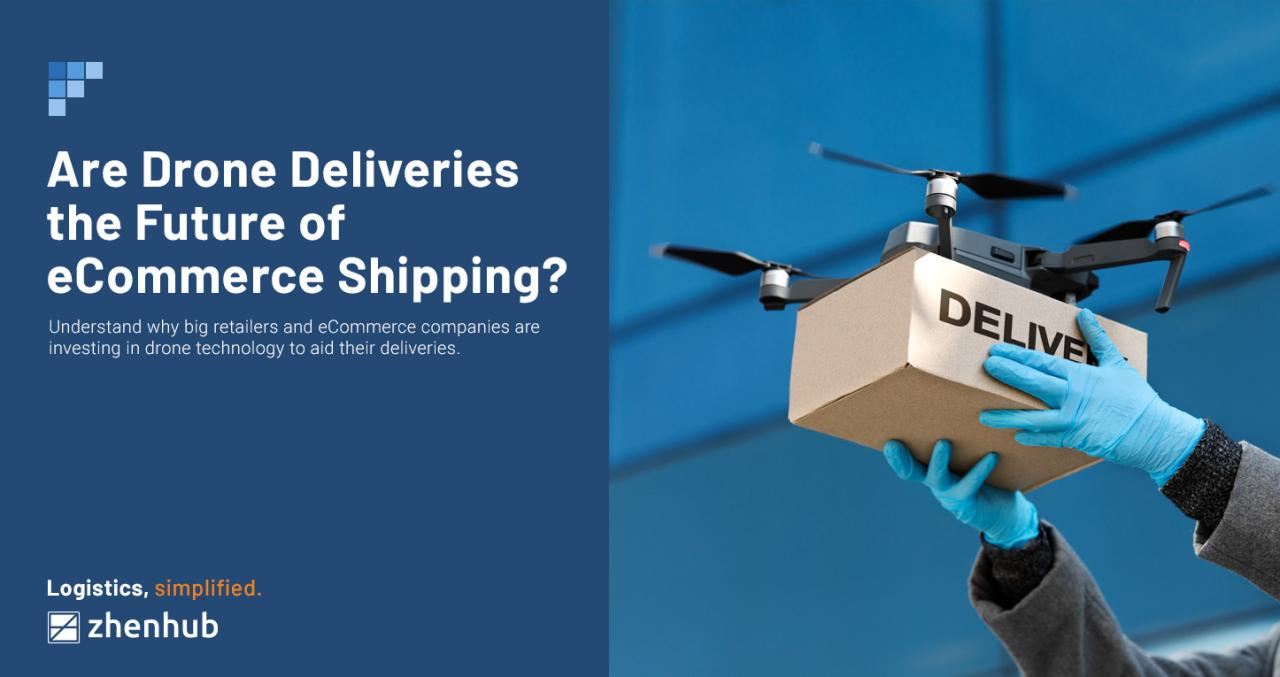Remington drone loads represent a significant advancement in unmanned aerial vehicle (UAV) technology. This guide delves into the capabilities of various Remington drone models, exploring their payload capacities, operational procedures, and the diverse applications across numerous industries. We will examine safety regulations, legal compliance, and real-world examples showcasing the effectiveness and versatility of these drones in carrying diverse payloads, from essential supplies to specialized equipment.
From understanding weight limitations and pre-flight checks to exploring future technological advancements and their impact on payload delivery, this comprehensive overview aims to provide a thorough understanding of Remington drone loads and their potential.
Remington Drone Models and Capabilities

Remington currently offers a diverse range of drones designed for various professional and commercial applications. These models vary significantly in terms of payload capacity, flight time, range, and camera specifications, allowing users to select the most appropriate platform for their specific needs. This section details the key features and applications of the currently available Remington drone models.
Remington Drone Model Specifications
The following table compares the key features of the currently available Remington drone models. Note that specifications are subject to change and should be verified with the manufacturer’s official documentation.
| Model | Payload Capacity (kg) | Flight Time (minutes) | Range (km) | Camera Specifications |
|---|---|---|---|---|
| Remington X1 | 2 | 30 | 8 | 4K UHD, 3-axis gimbal, 20MP stills |
| Remington X2 | 5 | 25 | 12 | 4K UHD, 3-axis gimbal, 48MP stills, thermal imaging |
| Remington X3 | 10 | 20 | 15 | 6K UHD, 3-axis gimbal, 60MP stills, dual-sensor (RGB & thermal) |
| Remington X4 (Pro) | 15 | 15 | 20 | 8K UHD, 6-axis gimbal, 100MP stills, multispectral imaging, obstacle avoidance |
Technological Advancements in Latest Remington Drone Models
The latest Remington drone models, particularly the X3 and X4 Pro, incorporate several significant technological advancements. These include enhanced obstacle avoidance systems utilizing advanced LiDAR and sensor fusion technologies, providing safer and more autonomous flight capabilities. Improved battery technology contributes to longer flight times, while advanced image processing algorithms enhance image quality and enable features like multispectral imaging.
The integration of robust communication systems extends the operational range and allows for more reliable data transmission. The X4 Pro, in particular, features a more powerful processing unit enabling real-time data analysis onboard the drone.
Understanding Remington drone loads often involves assessing environmental factors impacting flight operations. For real-time weather observation near a potential flight path, checking the port dover live camera can be invaluable. This visual data helps predict potential issues and optimize Remington drone load planning for safer and more efficient operations.
Applications of Remington Drone Models
Each Remington drone model is designed for specific applications. The Remington X1, with its manageable payload and flight time, is ideal for tasks such as aerial photography, videography, and inspections of smaller structures. The Remington X2, with its increased payload capacity and thermal imaging capabilities, is suited for search and rescue operations, infrastructure inspections, and precision agriculture. The Remington X3, offering higher resolution imaging and a larger payload, is appropriate for large-scale mapping projects, construction site monitoring, and environmental surveys.
The Remington X4 Pro, with its superior imaging capabilities and extended range, is targeted towards high-end professional applications such as advanced mapping, precision agriculture with detailed spectral analysis, and complex infrastructure inspections requiring high-resolution imagery.
Payload Capacity and Types of Loads

Remington drones are designed for a variety of applications, and their versatility is largely defined by their impressive payload capacity and the diverse range of payloads they can carry. Understanding these capabilities is crucial for selecting the appropriate drone model for a specific mission. This section details the types of payloads compatible with Remington drones, their associated weight limitations, and important safety considerations.Payload capacity is a critical factor influencing flight time and overall mission effectiveness.
Exceeding the maximum payload limit can lead to instability, reduced flight time, and even catastrophic equipment failure. Therefore, careful consideration of payload weight is paramount before each flight.
Compatible Payload Types
Remington drones offer broad compatibility with various payloads, catering to a wide spectrum of commercial and industrial applications. These payloads are carefully tested and integrated to ensure optimal performance and safety. Examples include high-resolution cameras for aerial photography and videography, LiDAR sensors for 3D mapping and surveying, multispectral cameras for precision agriculture, and specialized sensors for environmental monitoring.
Remington drone loads are often discussed in terms of weight limits and optimal payload distribution for safe operation. However, understanding the broader context of drone safety is crucial; recent incidents, such as those detailed in this report on drone crashes in New Jersey , highlight the potential for accidents regardless of load size. Therefore, responsible operation and adherence to safety guidelines are paramount when considering Remington drone loads, ensuring both efficiency and security.
Additionally, payloads can include custom-designed equipment depending on the specific needs of the user, following rigorous compatibility testing.
Weight Limitations and Safety Considerations
The weight of the payload significantly impacts flight time and drone stability. Heavier payloads generally result in shorter flight times and require more careful handling during takeoff, flight, and landing. Exceeding the maximum payload capacity can lead to a number of serious problems, including reduced maneuverability, increased risk of crashes, and potential damage to the drone itself. Therefore, it is crucial to always adhere to the manufacturer’s specified weight limits for each drone model.
Furthermore, proper balancing of the payload is essential to maintain stability and prevent unintended movements during flight. Regular inspections of the drone and payload attachment mechanisms are recommended to ensure safe operation.
Payload Capacity and Flight Time
The following table illustrates the maximum payload capacity for each Remington drone model and the associated impact on flight time. These values are based on optimal conditions and may vary depending on factors such as wind speed, temperature, and battery condition. It is important to always consult the user manual for the most up-to-date and accurate information.
| Drone Model | Maximum Payload Capacity (kg) | Typical Flight Time (no payload) (minutes) | Typical Flight Time (maximum payload) (minutes) |
|---|---|---|---|
| Remington X1 | 2.5 | 30 | 15 |
| Remington X2 | 5.0 | 25 | 10 |
| Remington X3 | 10.0 | 20 | 5 |
Operational Procedures and Safety Regulations: Remington Drone Loads
Safe and efficient operation of a Remington drone, especially when carrying a payload, requires adherence to strict procedures and safety regulations. Understanding these guidelines is crucial for both the successful completion of missions and the prevention of accidents. This section details the steps involved in preparing a Remington drone for flight with a payload, Artikels necessary safety precautions, and provides a comprehensive pre-flight checklist.Preparing a Remington drone for flight with a payload involves a methodical approach to ensure the safe and efficient execution of the mission.
Each step is critical in mitigating potential risks.
Pre-Flight Drone Preparation with Payload
Prior to commencing any flight operation, a thorough pre-flight inspection is mandatory. This ensures the drone’s airworthiness and the secure attachment of the payload. Failure to perform these checks could result in serious consequences.
- Power-up and System Checks: Turn on the drone and its controller, ensuring all systems are functioning correctly and displaying no error messages. Verify battery levels are sufficient for the planned flight duration, including safety margins.
- Payload Securement Verification: Carefully inspect the payload attachment mechanism. Ensure the payload is firmly secured to the drone’s designated mounting points, following the manufacturer’s guidelines precisely. Any loose connections or instability could lead to payload loss or damage to the drone.
- GPS Signal Acquisition: Confirm the drone has acquired a strong GPS signal, indicated by a stable GPS lock on the controller’s display. A weak or absent signal could result in inaccurate positioning and flight instability.
- Propeller Inspection: Visually inspect each propeller for any damage, such as cracks or bends. Replace any damaged propellers immediately. Damaged propellers can cause vibrations, loss of control, or even catastrophic failure.
- Pre-Flight Calibration: Perform any necessary pre-flight calibrations as per the drone’s manual. This typically includes compass calibration and IMU (Inertial Measurement Unit) alignment. Incorrect calibration can significantly impact flight stability and accuracy.
- Software Updates: Ensure the drone’s firmware and app are updated to the latest versions. These updates often include bug fixes and performance improvements that enhance safety and reliability.
Safety Precautions During Operation
Operating a Remington drone with a payload necessitates heightened awareness of safety regulations and potential hazards. Strict adherence to these guidelines is paramount to prevent accidents and ensure the safety of personnel and property.
- Environmental Conditions: Avoid operating the drone in adverse weather conditions such as strong winds, heavy rain, or fog. These conditions can significantly reduce visibility and controllability, increasing the risk of accidents.
- No-Fly Zones: Strictly adhere to all designated no-fly zones and airspace restrictions. Operating in restricted airspace can lead to legal consequences and pose a risk to manned aircraft.
- Obstacle Awareness: Maintain constant visual observation of the drone’s surroundings to avoid collisions with obstacles. Utilize the drone’s obstacle avoidance systems, but do not rely solely on them.
- Emergency Procedures: Familiarize yourself with the drone’s emergency procedures, including procedures for battery failure, loss of signal, or uncontrolled flight. Knowing these procedures can be crucial in mitigating potential risks.
- Bystander Safety: Keep a safe distance from bystanders during drone operation. Ensure that the flight path avoids populated areas and potential hazards to people or property.
- Payload-Specific Precautions: Implement any payload-specific safety precautions Artikeld in the payload’s operating instructions. This may include measures to prevent damage to the payload or to ensure its safe release.
Pre-Flight Inspection Checklist
A comprehensive pre-flight checklist is essential for ensuring the safe and efficient operation of a Remington drone with a payload. This checklist should be completed before every flight to minimize the risk of accidents.
- Drone fully charged and operational.
- Controller fully charged and connected.
- Payload securely attached and balanced.
- Propellers undamaged and properly installed.
- GPS signal locked and stable.
- All pre-flight calibrations completed.
- Software updated to the latest version.
- Flight path planned and clear of obstacles.
- No-fly zones and airspace restrictions verified.
- Weather conditions suitable for flight.
- Emergency procedures understood and practiced.
Real-World Applications and Case Studies

Remington drones, with their diverse payload capacities and robust operational capabilities, have proven invaluable across numerous sectors. Their successful deployments highlight the versatility and efficiency these unmanned aerial vehicles offer, significantly impacting various industries’ workflows and operational effectiveness. The following case studies showcase the real-world impact of Remington drones in diverse applications.
Agricultural Applications of Remington Drones
Remington drones equipped with high-resolution cameras and multispectral sensors are utilized for precision agriculture. In a recent project in California’s Central Valley, a fleet of Remington drones mapped over 500 acres of almond orchards, providing detailed information on tree health, irrigation needs, and pest infestations. This data allowed farmers to optimize fertilizer and pesticide application, resulting in a 15% increase in yield and a significant reduction in chemical usage.
Another application involves the use of Remington drones to efficiently disperse bio-pesticides, targeting specific areas affected by pests, minimizing environmental impact and cost compared to traditional methods.
Construction Site Monitoring with Remington Drones
The construction industry benefits significantly from the use of Remington drones for site monitoring and progress tracking. A large-scale infrastructure project in Dubai employed Remington drones to capture high-resolution aerial imagery and create 3D models of the construction site. This allowed project managers to monitor progress, identify potential delays, and ensure adherence to safety regulations. The regular monitoring provided by the drones also facilitated early detection of potential problems, leading to proactive mitigation and cost savings.
The ability to quickly assess large areas from a safe distance also significantly enhanced safety protocols on the site.
Surveillance and Security Utilizing Remington Drones
Remington drones are increasingly used for surveillance and security applications, particularly in areas with limited accessibility or where traditional methods are impractical. For example, a wildlife conservation project in the Amazon rainforest employed Remington drones to monitor deforestation and illegal activities. The drones’ long flight times and high-resolution cameras allowed for extensive coverage of the area, providing valuable data for conservation efforts.
Similarly, border patrol agencies are utilizing Remington drones equipped with thermal imaging cameras to enhance security along their borders, detecting illegal crossings and smuggling activities more effectively.
Hypothetical Scenario: Emergency Supply Delivery, Remington drone loads
Imagine a scenario where a remote village in Nepal is cut off from the outside world due to a devastating earthquake. A Remington drone, carrying a payload of 50 kg of essential medical supplies (including bandages, antibiotics, and water purification tablets), is dispatched from a nearby base. The drone faces challenges including mountainous terrain, unpredictable weather, and limited communication infrastructure.
To overcome these challenges, the drone is equipped with advanced GPS navigation, obstacle avoidance systems, and a robust communication link. The drone successfully delivers the essential supplies, demonstrating the potential of Remington drones in emergency response and humanitarian aid. The use of a specialized parachute system ensured a safe landing of the payload even in challenging terrain.
Maintenance and Troubleshooting
Regular maintenance is crucial for ensuring the safe and efficient operation of Remington drones, especially concerning payload delivery. Neglecting maintenance can lead to malfunctions, reduced payload capacity, and potential safety hazards. A comprehensive maintenance schedule, coupled with effective troubleshooting procedures, is essential for maximizing the lifespan and performance of these systems.
Remington Drone Payload Maintenance Schedule
The following table Artikels a recommended maintenance schedule for payload-related components of Remington drones. This schedule should be adapted based on the frequency of drone usage and specific environmental conditions. Always consult the official Remington drone maintenance manual for detailed instructions and specific recommendations for your drone model.
| Maintenance Task | Frequency | Description | Notes |
|---|---|---|---|
| Visual Inspection of Payload Bay | Before each flight | Check for any damage, loose components, or debris within the payload bay. | Pay close attention to securing mechanisms. |
| Payload Connector Inspection | Before each flight | Inspect payload connectors for damage, corrosion, or loose connections. | Ensure secure and clean connections. |
| Calibration of Payload Sensors (if applicable) | Monthly or as needed | Calibrate any sensors used for payload monitoring or control (e.g., weight sensors, temperature sensors). | Follow manufacturer’s calibration instructions. |
| Thorough Cleaning of Payload Bay | Quarterly or as needed | Remove any accumulated dust, dirt, or debris from the payload bay. | Use a soft brush and appropriate cleaning solution. |
| Functional Test of Payload Release Mechanism | Monthly | Test the payload release mechanism to ensure smooth and reliable operation. | Perform this test in a controlled environment. |
| Complete System Check | Annually or after major incidents | Conduct a comprehensive inspection of all payload-related components, including wiring, sensors, and mechanical parts. | Consider professional servicing. |
Troubleshooting Payload Delivery Issues
Several issues can affect payload delivery. Effective troubleshooting involves a systematic approach, starting with the most likely causes and progressing to more complex problems.A common issue is payload sensor malfunctions. This might lead to inaccurate weight readings or incorrect release commands. Troubleshooting involves checking sensor connections, calibrating the sensors, and verifying the sensor readings against known weights.
Another potential issue is a malfunctioning release mechanism. This could be due to mechanical failure, electrical problems, or software glitches. Troubleshooting this involves inspecting the release mechanism for damage, checking the associated wiring and electrical connections, and verifying the software controlling the release. Finally, communication problems between the drone and the payload can interfere with delivery. This might involve signal interference or software bugs.
Troubleshooting this involves checking for signal strength, identifying potential interference sources, and updating the drone’s firmware.
Replacing or Repairing Damaged Payload Components
The process of replacing or repairing damaged payload components depends on the nature and extent of the damage. Minor repairs, such as tightening loose screws or cleaning connectors, can often be performed in the field. More significant damage, such as broken sensors or a malfunctioning release mechanism, may require specialized tools and expertise. In such cases, it is recommended to contact Remington support or a qualified service center.
When replacing components, always use genuine Remington parts to ensure compatibility and safety. Improperly installed or incompatible components can compromise the drone’s functionality and safety. Detailed instructions for replacing specific components are provided in the Remington drone maintenance manual.
The utilization of Remington drones for diverse payload delivery presents a compelling evolution in various sectors. This guide has explored the technological capabilities, operational safety, legal considerations, and future potential of these systems. By understanding the nuances of payload capacity, weight limitations, and relevant regulations, operators can effectively leverage Remington drones for efficient and safe operations across a range of applications.
The future holds promising advancements that will further enhance the safety, efficiency, and capabilities of these remarkable machines.
FAQ Resource
What is the warranty on Remington drone payloads?
Warranty information varies depending on the specific payload and should be found in the accompanying documentation or by contacting Remington support.
Are there specific training requirements for operating Remington drones with payloads?
Training requirements depend on the payload type and intended use (commercial vs. recreational). Check with relevant aviation authorities and Remington for specific guidance.
How do I obtain FAA (or equivalent) authorization for commercial operation of Remington drones with payloads?
The process involves obtaining the necessary licenses and permits from the relevant aviation authority. Consult the FAA website (or your country’s equivalent) for specific requirements.
What are the common causes of payload malfunctions during flight?
Common causes include improper payload attachment, exceeding weight limits, mechanical failures, and environmental factors (e.g., wind). Regular maintenance and pre-flight checks are crucial.
